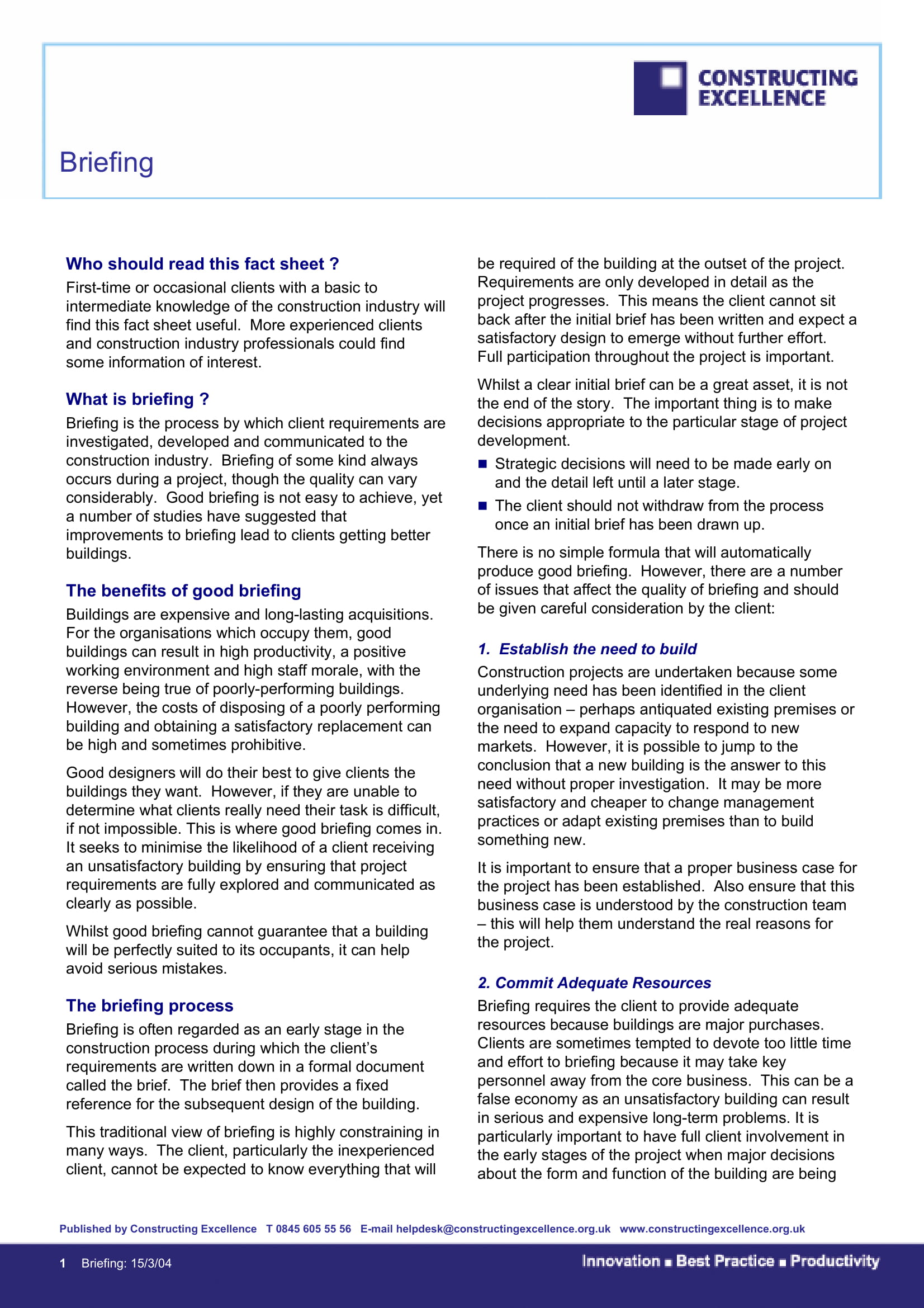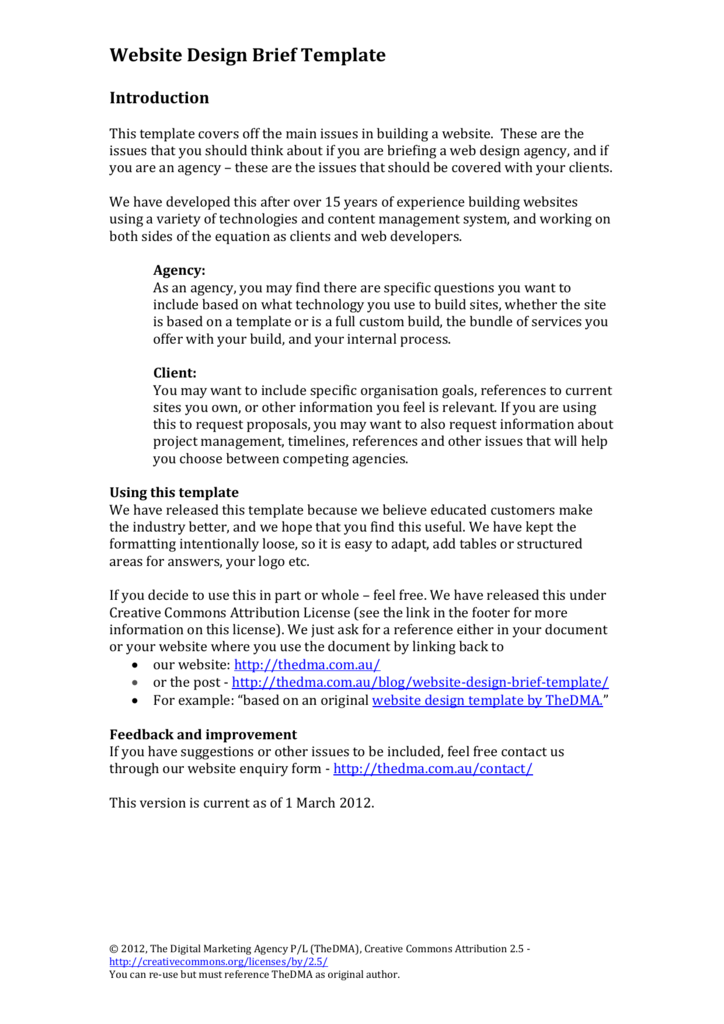Table Of Content

There is no one-size-fits-all; the exact information you need is defined by your own design process and preferred way of working. With FigJam's editable template, it's easy to add visual elements and inspirational images, in addition to writing descriptive text, so feel free to exercise a multi-media approach. Use our free design brief templates to elevate your next creative project. Capture all the key information needed to guide your creative team to deliver exceptional creative work.
Creative Workflow Management: Tips to Amp Up Your Creative Work
Transitioning to a circular business model with design - McKinsey
Transitioning to a circular business model with design.
Posted: Tue, 26 Apr 2022 07:00:00 GMT [source]
The context should also clarify how your creative choices will contribute to the client’s goals. Finally, your design brief should include all of the necessary information to outline a project from start to finish. In this guide, we cover what a design brief is, the benefits of creating one, how to write a design brief, and the elements you should always include. If you want to set yourself up for success on your next design project, it’s imperative that you start with a design brief. A design brief creates a structured road map for your project and helps facilitate better communication for everyone involved.
Overview
Marketing and design are almost always involved, and oftentimes other departments will also play a part. This means several individuals from different teams working together on the same desired outcome. Also note what your audience values, along with their interests, wants, and needs.
Best UX Design Software Tools for Designers in 2024
The person compiling the design brief will include a high-level overview of this information, with links to any research. A design brief describes a project’s scope, expectations, responsibilities, deadlines, and deliverables specific to designers. It tells designers what to design, who it’s for, and when to deliver it. The second step in writing a UX design brief is to give an overview of the project. The goal is to define the project and how it will work in order to help you organize UX strategy, ideas and provide a framework for your team. It will help you understand the market, which can be a source of inspiration for your products and services.
How to use the Design Brief template
Decide on a start date and end date, and then fill in as many important dates as you can in between. Knowing the important deadlines from the beginning gives all stakeholders an idea of how long their part of the work will take. Be as specific as you can with dates and deadlines, and keep in mind that adjustments may need to be made as the work progresses.
Design brief vs. creative brief
Included on this page, you'll find details on what a design brief is, free design brief templates, information regarding how to write a design brief, and much more. For example, if you’re working on a new design, you might give a timeline for when the initial prototype will be done, schedules for user testing, and another date for the final product launch. Whether you're building a library or a website, most projects have a lot of moving parts. Clear guidelines save time with back-and-forth communication or redesigns because designers used the wrong elements. Create a shared folder or zip file that designers can download and use for the project. The design brief can instruct designers to provide images and videos in the necessary formats for Instagram, LinkedIn, Facebook, Pinterest, etc.
How to Write a Design Brief (With Examples)
Without this, you could reach the end of the project before you discover you’ve created the wrong thing. Create a design that checks all the boxes with our design brief template. Then, use your design objectives, overall vision, and our interactive templates to guide every step of the creative process.
Identifying Target Audience
On the other hand, a design brief that contains nonessential information and gaping holes causes even the best designers to struggle to do great work. Even worse, running a project without a design brief results in chaos with countless phone calls, ping-pong email threads and lack of clarity on design direction and project milestones. Your budget doesn’t only cover designer fees but should include contingency cushion too because life happens—just like spilled coffee on newly bought business cards. Moving goalposts mid-project is every designer’s nightmare – suddenly having to adapt or even restart because of changes that could have been flagged earlier wastes valuable time and resources. In contrast, consider an online education platform looking for a complete project revamp – website redesigning being the primary task at hand.

Importance of Approval in the Design Brief Process

The project budget has to align with project deliverables to avoid the possibility of scope creep. Clients need to state when they want to start and complete the project. If timescales don’t fit with the designer’s other commitments, it could be a non-starter. Design briefs should always include an overview of the client’s business so that all stakeholders are familiar with the brand and what it stands for. Whomever writes the design brief needs to include key elements so that everyone involved has a clear picture of the requirements.
Summaries are essential for stakeholders who typically don’t need too much detail but want to understand the purpose of the design project. Recent competitors designed their pages, prioritizing only user experience. Didi Connect plans to make its website application easier to navigate with simple icons, clear layouts, and colors. This project aims to improve the user experience of the company’s mobile app, focusing primarily on its design.
A successful product launch backed by consistent branding that echoed their green philosophy across all channels. The anatomy of an effective design brief includes several crucial elements. Each one serves as the backbone for the project, helping to guide designers and clients towards successful completion. A well-written design brief will help provide shared clarity surrounding your project goals and deliverables. With Asana’s creative production tools, you’ll be able to streamline your design projects and your team will be able to deliver game-changing results time and time again.
Among other important elements, your creative brief is your opportunity to define the scope, deadlines, and deliverables specific to the creative part of your project. When it comes to interior design, you want your client to feel as comfortable as possible in their desired environment. This interior design brief provides space to capture client and project information, lifestyle details, style preferences, measurements, floor sketches, and more. A comprehensive design brief can serve as a business plan and source of truth.
Below, you’ll find a sample of what a design brief would look like for an ebook campaign launch, but can be customized to fit any project. Use this as a starting point for your own brief to make sure all the details are covered up front. Our budget for the app design project is $15,000, with a timeline of five months from concept to final design handoff.

No comments:
Post a Comment